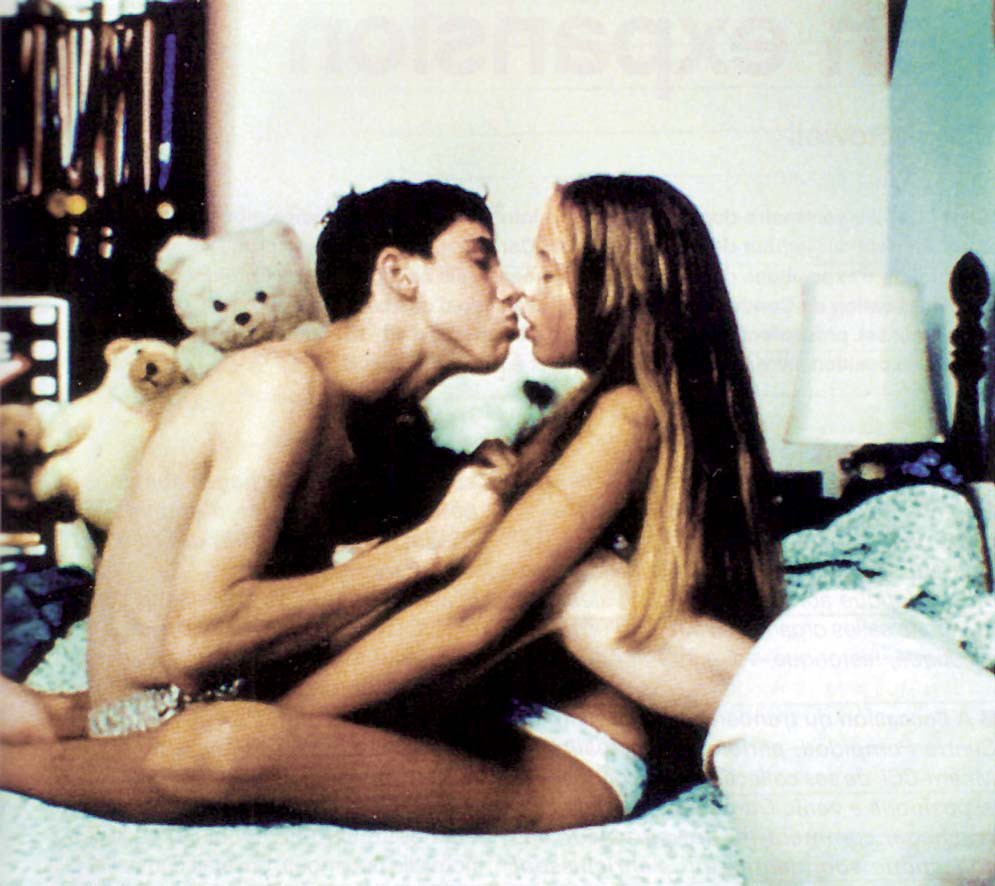1. Kids
Like, duh. Obviously Clark gave us Kids, a film considered controversial upon its release in 1995 that one reviewer called it “borderline pornography.” But the film’s longevity — recently celebrated in a series of reunion events to mark its 20th anniversary — illustrates how it has outlasted its headline grabbing, taboo-busting narrative of explicit sex, drug taking and skateboarding to become a definitive snapshot of 90s youth in flux.
2. He influenced a generation of filmmakers
Way before all that brouhaha over Kids, Clark was a celebrated photographer whose work documented teenage drug taking and sexual activity. He began in 1959, shooting his friends injecting amphetamines. These photographs would come to form his first book, 1971’s Tulsa. His work subsequently evolved to reflect the effect media had on teen culture. It is not surprising to learn that a director like Gus Van Sant was influenced by Clark’s early photography — an aesthetic most keenly felt in his 2003 film Elephant.
3. And one filmmaker especially
Harmony Korine was a 19-year-old skater in NYC’s Washington Square Park who noticed Clark taking pictures. They talked and Clark asked Harmony to come up with a script around their experiences. It took Harmony three weeks to write Kids. Harmony has since gone on to Clark-esque notoriety for his unconventional, routinely controversial films like Gummo, Trash Humpers and Spring Breakers.
4. He also introduced the world to Chloë Sevigny
Harmony met Chloë Sevigny in Washington Square Park in 1993 when she was a senior in high school. They became friends, which led her to being cast in Kids, although she was hardly unknown at that point (a presence on the New York scene, she inspired a 1994 The New Yorker article declaring her ‘the coolest girl in the world’). But it was Clark’s film that put Sevigny on the mainstream map, and the ‘coolest girl in the world’ title stuck. She’s had choice parts in Dogville, American Psycho and Boys Don’t Cry, as well enduring as a true fashion muse.
5. He gave us a lesson in anti style
Clark’s Kids remain part of the fashion template some 20 years on for their casual adherence to brands — Converse, York, Ralph Lauren — and utter disregard for style rules.
6. Which American Apparel followed to a power washed tee
Watch the film, then shop the look. American Apparel’s clothing, style and equally explicit advertising briefs come all the way from Larry town.
7. He brought skaters to the party
You may think skaters are cool now, but they weren’t always considered so. Clark’s film brought skate culture to wider attention just as global brands such as Supreme were finding their feet. Supreme had just opened its first shop at the time of filming Kids and the company’s first hire was Gio Estevez, who recently told the Guardian: ‘Skateboarding wasn’t [always] cool. We’d show up to the party and everyone would get bummed out, like ‘Ugh, who invited the skaters? Fuuuuck. Hide the beer.'” Bringing skateboarding subculture to a mainstream audience may also mean that Larry is responsible for “Sk8er Boi,” Avril Lavigne’s ode to boys on four wheels from 2002. You can’t have everything.
8. He can also take some responsibility for Skins
E4’s noughties youth drama transported all the drug taking, sex action from Manhattan to Bristol. Surprisingly, it worked.
9. There is also Bully
With all the noise about Kids and Ken Park, Clark’s other notorious film that featured scenes of high school kid auto-erotic asphyxiation and ejaculation, the rest of the filmmaker’s output can fall outside of the radar. Bully, based on the real life story of friends who decide to murder one of their group after he physically and sexually abuses them, featured all of the standard Clark shock-and-awe tropes, but it also felt raw and unflinching — perhaps his most accomplished, serious work. It also provided an insight into Clark’s intent, being real about his subject in a way that legendary film critic Roger Ebert noted “calls the bluff of movies that pretend to be about murder but are really about entertainment…Clark is not some objectified, outside adult observer making an after-school special, but an artist who has made a leap into this teenage mindscape.”
10. He’s one of the realest documentarians of teen life
In an interview with the Guardian, Clark said that the best compliment he ever received was from a boy who said of Kids: “That wasn’t like a movie at all. That was like life.”
Credits
Text Colin Crummy
